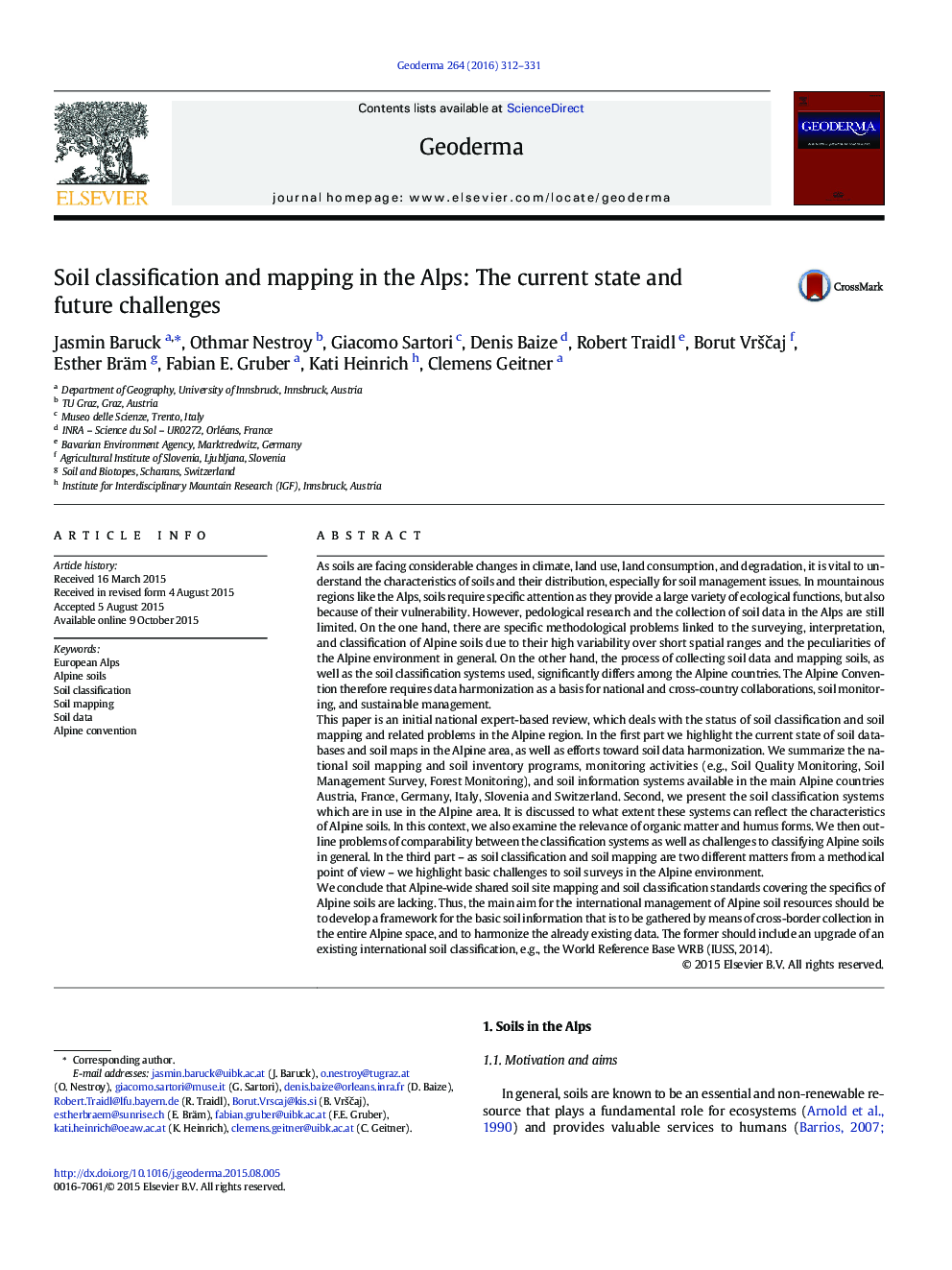| کد مقاله | کد نشریه | سال انتشار | مقاله انگلیسی | نسخه تمام متن |
|---|---|---|---|---|
| 4573111 | 1332419 | 2016 | 20 صفحه PDF | دانلود رایگان |
• We describe the characteristics of Alpine soils and demands for soil information.
• We highlight the current state of soil databases and soil maps in the Alpine area.
• We highlight soil classification systems in the main Alpine countries.
• We discuss to what extent these systems can reflect the characteristics of Alpine soils.
• We outline challenges to classifying and mapping Alpine soils.
As soils are facing considerable changes in climate, land use, land consumption, and degradation, it is vital to understand the characteristics of soils and their distribution, especially for soil management issues. In mountainous regions like the Alps, soils require specific attention as they provide a large variety of ecological functions, but also because of their vulnerability. However, pedological research and the collection of soil data in the Alps are still limited. On the one hand, there are specific methodological problems linked to the surveying, interpretation, and classification of Alpine soils due to their high variability over short spatial ranges and the peculiarities of the Alpine environment in general. On the other hand, the process of collecting soil data and mapping soils, as well as the soil classification systems used, significantly differs among the Alpine countries. The Alpine Convention therefore requires data harmonization as a basis for national and cross-country collaborations, soil monitoring, and sustainable management.This paper is an initial national expert-based review, which deals with the status of soil classification and soil mapping and related problems in the Alpine region. In the first part we highlight the current state of soil databases and soil maps in the Alpine area, as well as efforts toward soil data harmonization. We summarize the national soil mapping and soil inventory programs, monitoring activities (e.g., Soil Quality Monitoring, Soil Management Survey, Forest Monitoring), and soil information systems available in the main Alpine countries Austria, France, Germany, Italy, Slovenia and Switzerland. Second, we present the soil classification systems which are in use in the Alpine area. It is discussed to what extent these systems can reflect the characteristics of Alpine soils. In this context, we also examine the relevance of organic matter and humus forms. We then outline problems of comparability between the classification systems as well as challenges to classifying Alpine soils in general. In the third part – as soil classification and soil mapping are two different matters from a methodical point of view – we highlight basic challenges to soil surveys in the Alpine environment.We conclude that Alpine-wide shared soil site mapping and soil classification standards covering the specifics of Alpine soils are lacking. Thus, the main aim for the international management of Alpine soil resources should be to develop a framework for the basic soil information that is to be gathered by means of cross-border collection in the entire Alpine space, and to harmonize the already existing data. The former should include an upgrade of an existing international soil classification, e.g., the World Reference Base WRB (IUSS, 2014).
Journal: Geoderma - Volume 264, Part B, 15 February 2016, Pages 312–331
